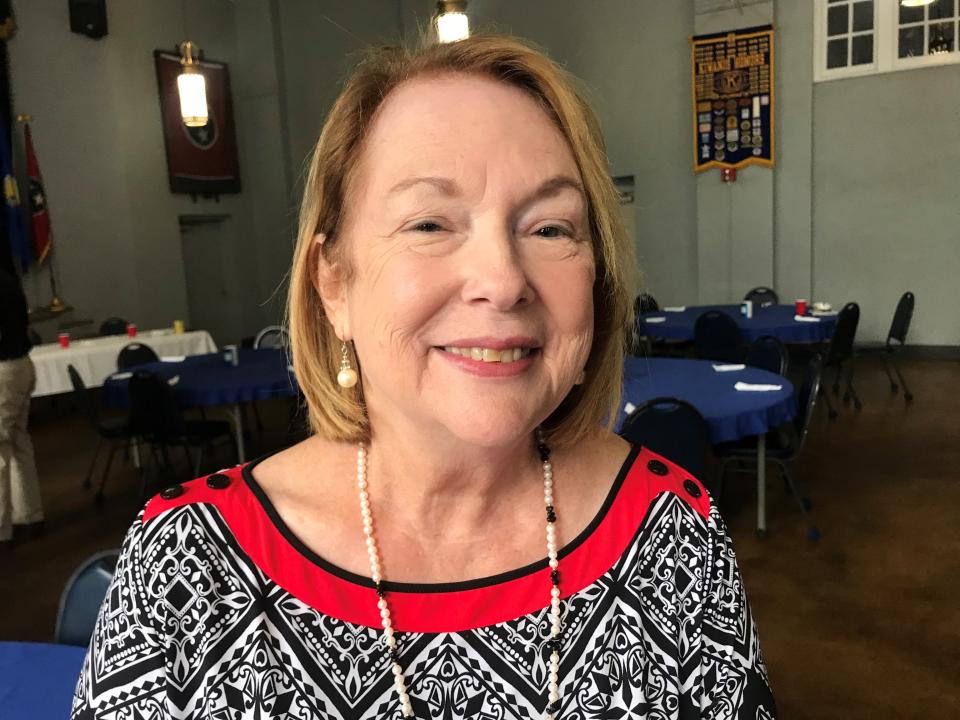Hickman: A love of tradition found in Mule Day
Columbia’s Mule Day exemplifies one of our most precious gifts from our forefathers, the love of tradition.
The tradition of Mule Day dates back to the First Monday in April. How amazed those mule and horse traders of the 1840s would be to see not only how our world had changed but also that appreciation for mules and horses has continued.
During the Civil War many farmers lost most of their valuable livestock. Many animals were slaughtered in battle, and others were stolen. The necessity to produce mules and horses for the farmers trying to recover from the war and survive Reconstruction provided the impetus for breeding the animals and selling them.
In 1868, the first advertisement for a carload of mules on the open market appeared in the newspaper in Columbia. Between 1870 and 1880 mules had replaced oxen for farming. Mules allowed the farmers to plough their fields more quickly and produce bigger yields.
By the turn of the century, mules were such a big business here that Columbia’s Mule Day was considered one of the greatest livestock markets in the world. In 1900, the British Army sent buyers to Columbia to purchase mules for their armies fighting the Boers in South Africa. The British agents bought every mule they could find, loaded them on train cars, and sent them to the coast to be shipped to their troops.
Mules and horses from Columbia were also sent to World War I and World War II. The U.S. Government even had a jack and jennet breeding farm located at the Middle Tennessee Experiment Station that was located on Lion Parkway near where Maury County Park is today. It was the only such facility in the world. Using the best jacks, brood mares and walking horses agriculturists focused on breeding, pulling power, and fertility.
As the tractor appeared, mules were somewhat less in demand. There were some famers however who had such a reverence for their mules that they refused to abandon them completely. Mules were especially good for planting a garden and digging potatoes.
As First Mondays continued through the early decades of the twentieth century, the mules and horses were still traded and sold.
A newspaper article in 1919 stated, “To those who have never witnessed a First Monday in Columbia, the street scenes were a revelation. It appeared that the skies had suddenly open up, and all the mules in the state had been dropped into the city. The streets were living, seething masses of mules from dawn until dusk, but when darkness came they disappeared as suddenly as they came.”
The Great Depression was difficult for everyone, but those on the farm fared better than most. The farmer and his family could maintain a kind of self-sufficiency. Folks said three things got southerners through the Depression. They were religion, mules, and good land.
In 1934, First Monday became Columbia’s New Deal Livestock Exposition and Parade. The idea came from Walter Hastings and Tom Brown. Both saw an opportunity to provide some entertainment and capitalize on Columbia’s famous mule market.
The advertisements in the papers invited folks to bring their mules and horses to town to compete for various prizes offered by local merchants. The parade was motorless. It began at East Seventh and Woodland, wound around the square, turned on South Main, and ended at the Depot. In the parade were the CMA band, buggies, wagons, and even a team of oxen.
The parade even gained interested from WLAC in Nashville in 1938 and the station broadcast the parade which at the time was four miles long. In 1939, the draw for the parade was a 1,000 girls on 1,000 mules. The parade continued on into the 1940s but by the time America had entered World War II the parade was cancelled.
After World War II ended, the promoters decided to try to revive the parade in 1947. The parade that year was two miles long and included an antebellum carriage which belonged to James K. Polk. In one article someone noted that he remembered when there were more mules than people in town that day.
The 110th opening of the Columbia Street Mule Sales was celebrated in 1950. The parade featured a float drawn by twenty mules, six bands and fifty mule drawn floats. Columbia Kiwanis sponsored Francis, the talking mule of Universal Studios to come to the parade and he was named the “Mule of the Year.”
The city used this occasion to dedicate the John Harlan Willis Bridge on the New Nashville Highway (US 31). There were numerous events that included a square dance, a Mule Day Ball and a mule circus as part of the festivities. That was the last parade until 1974.
The Bridle and Saddle Club took the initiative in 1974 to bring back the tradition. The community supported their initiative to help bring back the parade and other events.
Now for 50 consecutive years with the exception of the two years of the coronavirus Mule Day has been welcomed and celebrated by everyone. This event brings our community together to continue the tradition that began over 150 years ago.

Sheila Hickman is a retired educator and product of the Maury County Schools. She has a Bachelor’s degree in English from Lipscomb and a Master’s from Peabody Vanderbilt. She returned to teach English at Columbia Central High School, her alma mater.
This article originally appeared on The Daily Herald: Hickman: A love of tradition found in Mule Day

